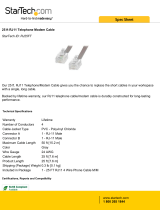
FCC Notices
Part 15, Subpart A
This device complies with Part 15 of the FCC Rules. Operation is subject to the following two
conditions: (1) This device may not cause harmful interference, and (2) this device must accept
any interference received, including interference that may cause undesired operation.
Note:
This equipment has been tested and found to comply with the limits for a Class A digital
device, pursuant to Part 15 of the FCC Rules. These limits are designed to provide
reasonable protection against harmful interference when the equipment is operated in a
commercial environment. This equipment generates, uses, and can radiate radio
frequency energy and, if not installed and used in accordance with the instruction
manual, may cause harmful interference to radio operations. Operation of this
equipment in a residential area is likely to cause harmful interference in which case the
user will be required to correct the interference at his own expense.
Changes or modifications to the RPSD device or devices that are not expressly approved by
AT&T could void the user’s authority to operate the equipment.
Part 68
This equipment complies with part 68 of the FCC rules. On the bottom of this equipment is a
label that contains, among other information, the FCC registration number and ringer
equivalence number (REN) for this equipment. If requested, this information must be provided
to the telephone company.
The REN is used to determine the quantity of devices which may be connected to the telephone
line. Excessive REN’s on the telephone line may result in the devices not ringing in response to
an incoming call. In most, but not all areas, the sum of REN’s should not exceed five. To be
certain of the number of devices that may be connected to the lines, as determined by the total
REN’s, contact the telephone company to determine the maximum REN for the calling area.
If the Remote Port Security Device Lock and Key (RPSD) causes harm to the telephone network,
the telephone company will notify you in advance that the temporary discontinuance of service
may be required. But, if advance notice isn’t practical, the telephone company will notify the
customer as soon as possible. Also, you will be advised of your right to file a complaint with the
FCC if you believe it is necessary.
The telephone company may make changes in its facilities, equipment, operations, or procedures
that could affect the operation of the equipment. If this happens, the telephone company will
provide advance notice in order for you to make the necessary modifications in order to maintain
uninterrupted service.
If trouble is experienced with the RPSD equipment, please contact AT&T for repair and/or
warranty information. If the trouble is causing harm to the telephone network, the telephone
company may request you remove the equipment from the network until the problem is resolved.
Refer to Chapter 5 for repair information or call 1-800-242-2121.
There is one public switched network interface jack (RJ11C), which has been registered for
permissive operation.
FCC Notices




















